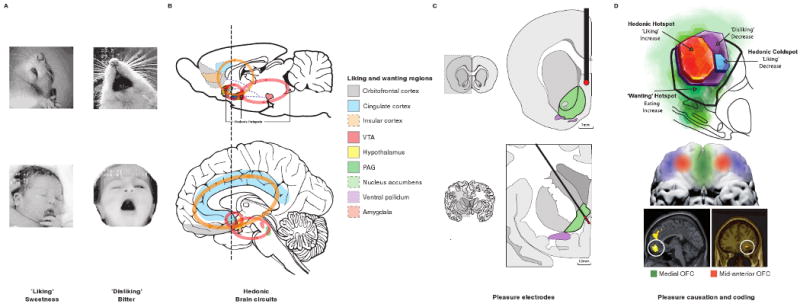Fig 2. Hedonic brain circuitry.

The schematic figure shows the brain regions for causing and coding fundamental pleasure in rodents and humans. (a) Facial ‘liking’ and ‘disliking’ expressions elicited by sweet and bitter taste are similar in rodents and human infants. (b, d) Pleasure causation has been identified in rodents as arising from interlinked subcortical hedonic hotspots, such as in nucleus accumbens and ventral ‘pallidum, where neural activation may increase ‘liking’ expressions to sweetness. Similar pleasure coding and incentive salience networks have also been identified in humans. (c) The so-called ‘pleasure’ electrodes in rodents and humans are unlikely to have elicited true pleasure but perhaps only incentive salience or ‘wanting’. (d) The cortical localization of pleasure coding may reach an apex in various regions of the orbitofrontal cortex, which differentiate subjective pleasantness from valence processing of aspects the same stimulus, such as a pleasant food.
